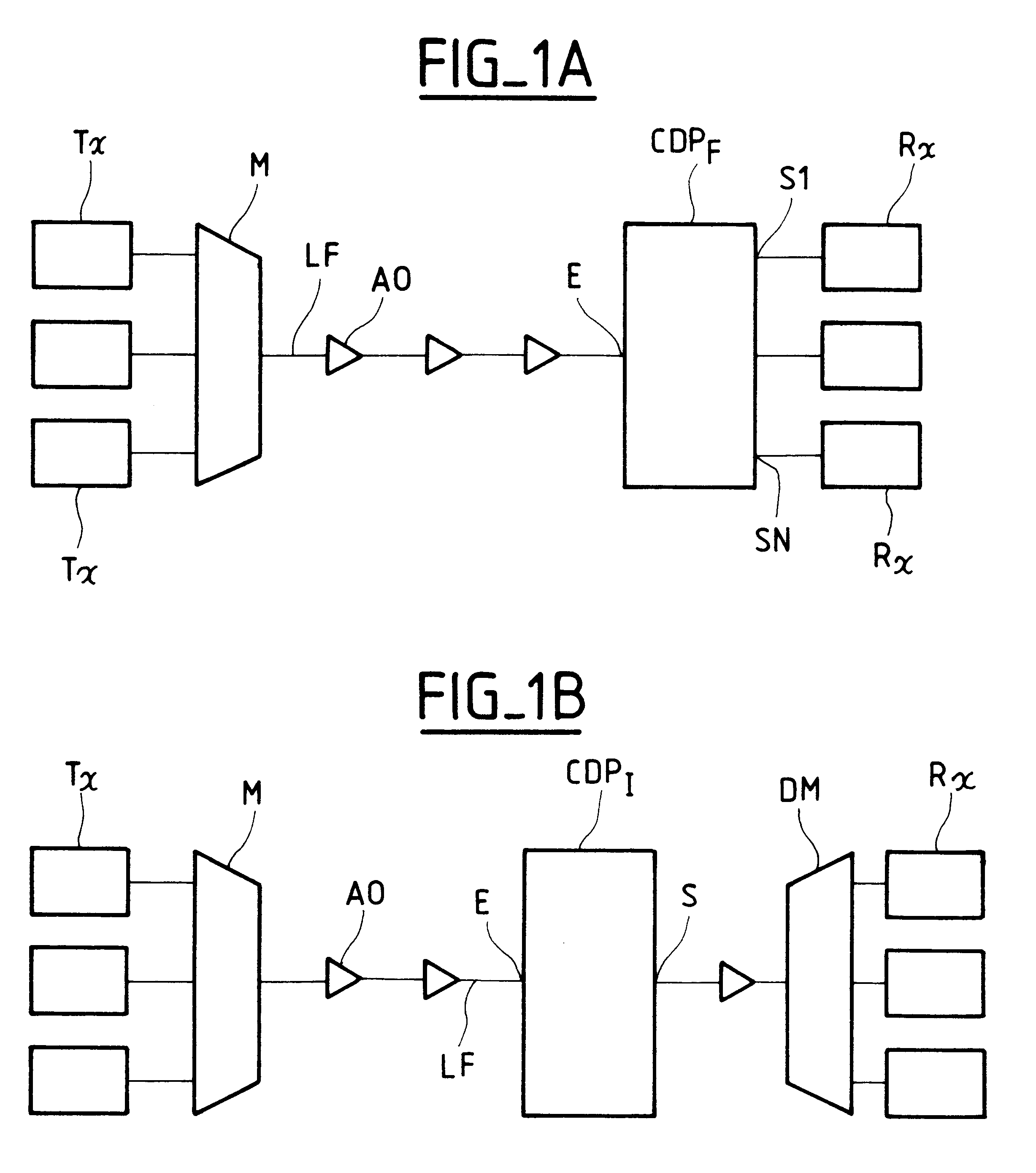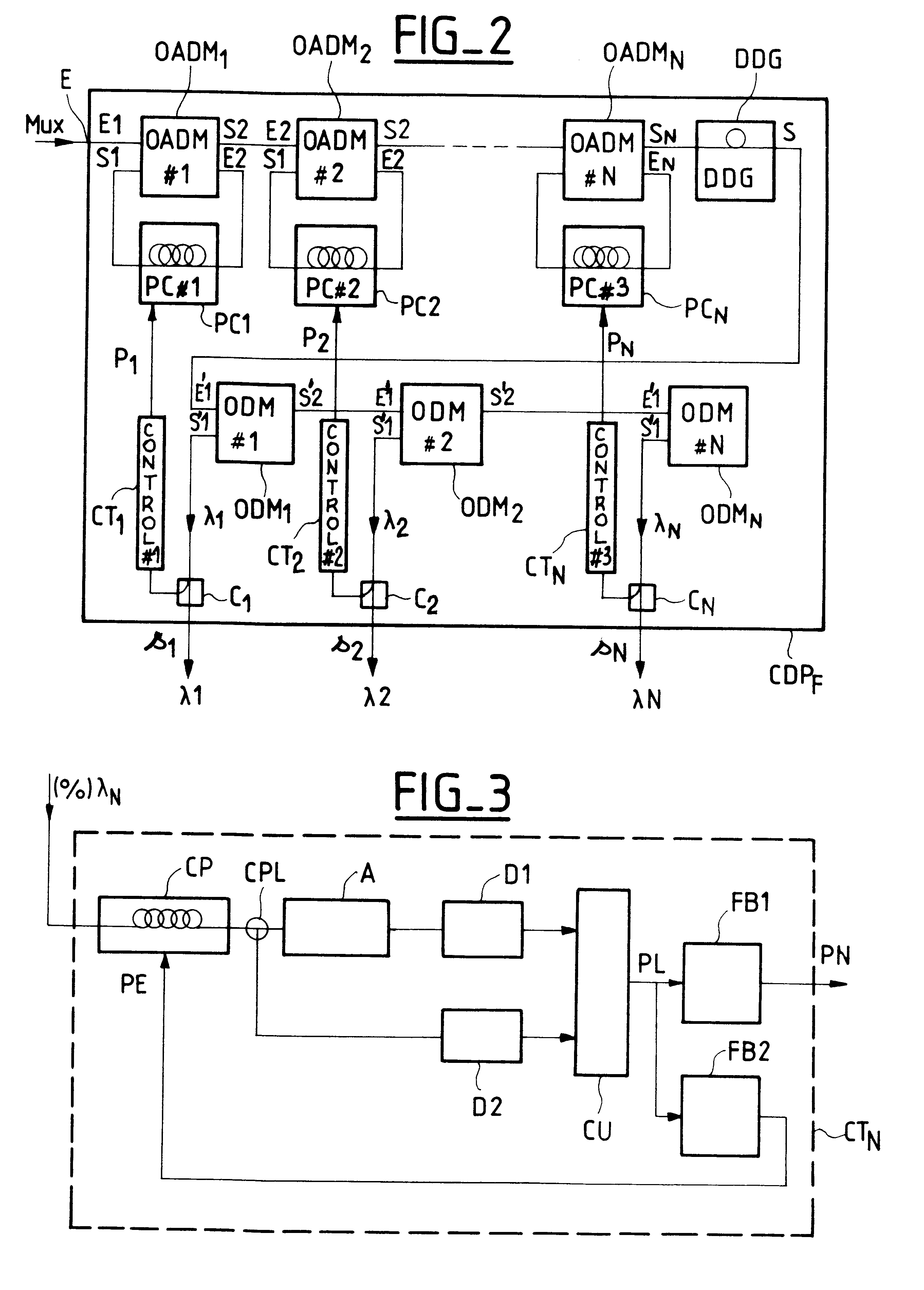System for compensating polarization dispersion of channels in a wavelength-division multiplex signal
- Summary
- Abstract
- Description
- Claims
- Application Information
AI Technical Summary
Benefits of technology
Problems solved by technology
Method used
Image
Examples
second embodiment
In a second embodiment, represented by the dashed lines in FIG. 4, the output of the polarization compensator CDP.sub.I is taken from the output of the last demultiplexer, in other words the output of demultiplexer ODM.sub.N, rather than the output of the differential delay generator DDG. For this, it is no longer necessary to place the coupler CS at the output of the generator DDG because all of the multiplex signal would be treated in the control loop. On the other hand, each demultiplexer would deliver at its output S'1 only a fraction of the extracted channel signal, the multiplexed optical signals of all the channels being supplied at the output S'2.
The compensated multiplex signal transmitted over the line is then available at the output S'2 of the last demultiplexer ODM.sub.N.
Embodiments of the various optimal demultiplexers ODM.sub.N that can be used to implement the polarization compensator of the invention, whether in-line or at the end of the line, will now be described i...
first embodiment
A first embodiment is shown in FIG. 5A in which the demultiplexer structure comprises a fiber segment with in-fiber Bragg gratings IFPG and a circulator C1 at the input of the fiber segment.
FIG. 5B shows a second embodiment. This embodiment is a Mach-Zehnder interferometer structure MZ with a fiber segment with in-fiber Bragg gratings IFBG in each branch of the interferometer structure. In practice the fiber of a branch is ultraviolet (UV) treated to match the phase difference between the two arms of the interferometer.
third embodiment
FIG. 5C shows a This is a coupler structure with respective couplers CPL1 and CPL2 and fiber segments with in-fiber Bragg gratings IFBG.
The fiber segments with in-fiber Bragg gratings can be fiber segments in which the Bragg grating is etched or photo-written, for example.
Three embodiments of the optical drop and insert multiplexers OADM.sub.N will now be described by way of example.
FIG. 6A shows a first embodiment which is a structure comprising a fiber segment with in-fiber Bragg gratings IFBG and a circulator C1-C2 at each end of the fiber segment.
FIG. 6B shows a second embodiment which is a Mach-Zehnder interferometer structure MZ with fiber segments and in-fiber Bragg gratings IFBG in each branch.
Finally, FIG. 6C shows a third embodiment in which the drop and insert multiplexer has a coupler structure with fiber segments with couplers CPL1 and CPL2 and in-fiber Bragg gratings IFBG.
As mentioned with reference to FIGS. 5A to 5C, the fiber segments with in-fiber Bragg gratings ca...
PUM
 Login to View More
Login to View More Abstract
Description
Claims
Application Information
 Login to View More
Login to View More - R&D
- Intellectual Property
- Life Sciences
- Materials
- Tech Scout
- Unparalleled Data Quality
- Higher Quality Content
- 60% Fewer Hallucinations
Browse by: Latest US Patents, China's latest patents, Technical Efficacy Thesaurus, Application Domain, Technology Topic, Popular Technical Reports.
© 2025 PatSnap. All rights reserved.Legal|Privacy policy|Modern Slavery Act Transparency Statement|Sitemap|About US| Contact US: help@patsnap.com



